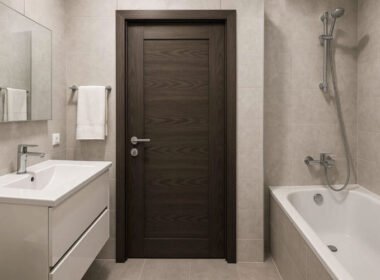What is Polycarbonate Glazing?
Polycarbonate glazing is a modern alternative to traditional glass. Made from tough, lightweight plastic, polycarbonate sheets are available in twin-wall, triple-wall, and solid forms. Unlike glass, polycarbonate has a greater strength-to-weight ratio and offers improved insulation, making it ideal for maintaining a steady temperature in your greenhouse.
How to Install Polycarbonate Glazing in Your Greenhouse
Installing polycarbonate glazing is relatively straightforward. First, measure the dimensions of your greenhouse to ensure you purchase the correct size sheets. Polycarbonate can be cut easily, so you can adjust the sheets to fit your structure.
Once you have the right materials, begin by securing the polycarbonate sheets to the frame. Make sure to use UV-resistant clips or screws to avoid damaging the material. The glazing should be fitted tightly to ensure there are no gaps where heat can escape. This will maximise the insulation properties of the polycarbonate and keep your greenhouse at the right temperature.
If your current greenhouse glazing is worn or damaged, consider replacing it with polycarbonate sheets. Replacement greenhouse panels can improve the overall efficiency of your greenhouse, saving you money in the long run by reducing heating and cooling costs.
Why Choose Polycarbonate for Your Greenhouse?
Polycarbonate is a tough, durable material designed to withstand extreme weather. It can resist high winds and heavy snow without breaking, unlike glass, which can crack easily. This makes it perfect for gardeners in areas with harsh conditions.
Polycarbonate also provides excellent insulation, especially in twin-wall or triple-wall forms. The layers trap air, creating a barrier that prevents heat loss, keeping your greenhouse warmer in winter and cooler in summer. This helps create the ideal growing environment for your plants year-round.
Polycarbonate has built-in UV protection. Its UV-resistant coating blocks harmful rays, preventing sunburn on plants while allowing enough light for photosynthesis, ensuring your crops stay healthy and thrive.
Benefits Beyond Insulation
Polycarbonate glazing also offers sound reduction, making it a great option for reducing noise from rain or wind. This can create a more peaceful environment for your plants to grow. Polycarbonate is virtually shatterproof, reducing the risk of injury from broken glass.
Another great benefit is the ability to create a more controlled environment. Polycarbonate’s insulating properties make it easier to regulate the temperature inside your greenhouse, especially in cold weather. As a result, your plants will be more likely to thrive, and you’ll have more consistent results in your gardening efforts.
Bringing It All Together
Polycarbonate glazing is a fantastic choice for gardeners who want to create an optimal environment for their plants. With its durability, insulation, and UV protection, it helps your greenhouse stay in great shape while keeping plants healthy. If your current glazing is damaged or ineffective, upgrading to polycarbonate or considering replacement greenhouse panels is a smart choice.
Final Thoughts on Polycarbonate Glazing
Using polycarbonate for your garden greenhouse can improve the growth conditions for your plants, help you save on energy costs, and offer lasting protection against the elements. It’s a practical, affordable, and reliable option that gives your greenhouse a significant upgrade without the hassle.










